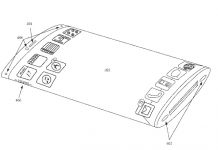 On his blog, Eoin Purcell points out that, while Apple’s in-app purchase crackdown means that bookstores such as Amazon or Barnes & Noble can’t sell e-books directly through their apps without losing out on the 30% agency fee, it also means that publishers can create their own apps to sell e-books directly, and just pay Apple the 30% they would have paid to Amazon.
On his blog, Eoin Purcell points out that, while Apple’s in-app purchase crackdown means that bookstores such as Amazon or Barnes & Noble can’t sell e-books directly through their apps without losing out on the 30% agency fee, it also means that publishers can create their own apps to sell e-books directly, and just pay Apple the 30% they would have paid to Amazon.
Purcell seems to think this is a tremendous opportunity that publishers should take advantage of. I’m not so sure. It seems to me that it might be hard for publishers to get people invested enough in them to want to go out and add yet another e-book application to their devices. And what’s more, if every publisher comes out with its own e-book app, that will lead to the sort of market fragmentation Mike Shatzkin has been worried about.
Furthermore, publishers are still inclined to try to protect their existing print market even as it starts to wane under an electronic onslaught. If it appeared that they were trying to cut out the middlemen and go directly to the consumer, there could be a backlash from those stores.
It seems to me that the publishers will be better off still selling through iBooks, and not having to adopt the added overhead of running e-bookstores of their own. Or, at least, I can’t come up with any compelling reason why they would want to. But I could be wrong.































First problem I see is that few know who the publisher of a book is and if it is inconvenient to leave Apple to get to Amazon, think how inconvenient it would be to go through hundreds of publishers to find a book. Second problem I see is that for it to be worthwhile to do and to antagonize booksellers like B&N and Amazon, the number of people buying books via the iPad and the number of books they are buying would need to be large, something not yet demonstrated (at least publicly).
Publisher apps for iPad and Android could work well for branded products from publishers such as For Dummies, Penguin classics, Disney, etc. Plus the publishers can get better insights into their customers’ reading habits vs. selling through B&N, Apple or others. But it has to be more than a simple bookselling app– social media, and other added value features would keep customers coming back.
Above all, publishers need to differentiate themselves in some way – and their brand is key to their survival – inclusion in iBook store ensures anonymity for smaller publishers and so a specialist app may be an important element among many in building a community around their brand and sustaining sales.
Small publishers who have invested influx way have seen impressive results
If this would add yet another version of DRM to ePub, please no! What was intended to be a free, open and standard ebook format (and succeeds admirably without DRM) has become a cumbersome and confusing mess in the hands of publishers. Retailers don’t insist on DRM: publishers do, especially the Agency 6. In theory, my collection of purchased DRM’d ePub ebooks is readable on a desktop computer in Adobe Digital Editions (if it’s in the mood to cooperate). However, on my iPhone or iPad, each different DRM belongs to a different reader program. Each reader program is a separate “activation” of Adobe DRM. You can rapidly run out of “activations” and be unable to read new ebooks. I think separate apps would work well for specialist publishers like O’Reilly, who don’t use DRM and have a distinct market. Baen (also no DRM) could benefit from a separate app, as their website is clunky. However, I think both these retailers are accessible through the Stanza app.